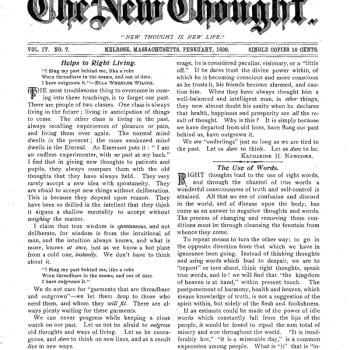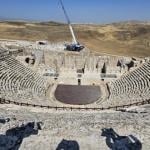I have been posting about the collapse of Roman society in Britain in the fifth century AD, and the rise of what we often call “Dark Age” societies – impoverished, war-torn, deurbanized, depopulated. In Christian history, this change is so important because of the accompanying revolution in religious structures, the evaporation of the old Roman dioceses and hierarchies, and the emergence of new tribal kingdoms and warlord statelets. It is out of that new reality that we see the growth of the Celtic church, which played such a critical role in conserving ancient learning, and spreading their vigorous form of the faith across Western Europe.
I have often posted before on these topics: on the issue of religious decline, the failure of the Roman state, and the emergence of new religious landscapes, not to mention legendary individual saints such as Patrick, Colmcille, Finnian, Illtud, and others. I won’t try to write a history of the Celtic churches here, but instead will focus on a couple of major points. What difference did it make that the old Roman urban order vanished?
Discussions of the Celtic church normally focus on Irish conditions and events, but the overlap with affairs in Western Britain was very close, from the time of Patrick onwards. The Irish church venerated British figures like Gildas, who I have been writing about at some length. It really mattered, then, what that British church was like.
The British church is a rare example of an institution that began with a Roman urban framework, but then transitioned away to new forms as the cities fell apart. This made them so unlike the framework we see in other former Roman territories like Gaul, Italy, or Spain. In those countries, the bishops served as the vital points of continuity from ancient times, and (generally) ensured that the old Roman cities and towns continued into the Middle Ages, usually with their names more or less intact – and that despite all the economic dislocation, and the frequent warfare. That in turn helped assure the continuity of the Latin language, which was best established in the cities. British bishops existed, but they necessarily relied on royal or tribal authorities, and that pattern was inherited by the Anglo-Saxons.
No bishop, no city, and vice versa.
The weakness of episcopal power in Britain contributed to the enormous upsurge of monasticism that we can trace in the sixth century, and which is so evident in the writings of Gildas in the 530s. That pattern emerged in Britain, and that in turn shaped the emerging church in Ireland, where there had never been cities to begin with. In the British Isles, monastic centers played the role that bishoprics played on the Continent, and by definition, they usually were not located in the old Roman cities. As I have argued before, though, British monasteries emerged too late to preserve much from the wreck of the old Roman order.
I am almost reluctant to frame this in such definitive terms, but I propose a Three Mile Rule, which I think is my own invention. Find an early ecclesiastical center, a major monastery or episcopal seat, and very frequently, it is around three miles from the key royal center or fortress in the area. The religious leaders were thus located close enough to the kings to be a constant presence, and to benefit from their military protection, but not so close as to be absolutely under secular thumbs. Think of it as around an hour’s walk. Time for tempers to cool down after a particularly fraught exchange….
There are literally dozens of examples of this in Britain and Ireland, but the classic double is Bamburgh Castle, the center of the ancient kingdom of Northumbria, and Lindisfarne or Holy Island. The historic fortress of the most powerful kings of north Wales in the sixth century was at Aberffraw in Angelesy, about two miles from the royal church/monastery of Llangadwaladr. The great royal seat of the northern part of Ireland was at Emain Macha, less than three miles from the monastery of Armagh, which claimed the inheritance of St. Patrick. If you stretch the distance to five miles, then you have possible doubles like Wroxeter (a Roman city and early medieval fortress) and the historic church at Sutton.
One intriguing duo appears in South Wales, just west of the powerful old Roman fortress of Cardiff. The main Dark Age center here was the reoccupied Celtic hill fort of Dinas Powys, and 2 1/2 miles east of that is the fascinating site of Llandough (Llandochwy), one of the few probable British cases where an old Roman villa likely transformed into an early medieval monastery. This is speculation, but did a villa-owning elite family move to a defensible fortress, while ceding the family home to a monastery? Around four miles from Dinas Powys stands another ancient ecclesiastical site, at Llandaff. (I have already written about another Welsh villa/monastery parallel from this era, quite nearby at Llantwit Major).
Often, the religious part of the double survived and flourished into the Middle Ages and beyond (witness the diocesan centers at Llandaff and Armagh) while the once vastly more important royal fortress fell into oblivion, until recovered by modern archaeologists.
It should also be said what did not happen in this transition, and the ensuing spread from Britain to Ireland. We know that early medieval Ireland had a dazzling range of ancient and Classical manuscripts and resources, which it subsequently transmitted to Europe. How natural, then, to think that these were preserved from Roman Britain, and then brought to Ireland. But they weren’t. Roman Britain had probably never had these resources, and there is no sign that any of them survived the destruction and abandonment of the old cities and villas. Those Classical texts were imported afresh from the sixth century onwards.
What the new British-Irish world did retain from the older Roman environment was the trade routes to the Mediterranean, to North Africa and beyond to the Levant, and even Egypt, and that maritime route into the Irish Sea world survived probably into the eighth century. We find its remains in all the British royal and monastics sites recording imported Mediterranean pottery. These were not cities, but rather the new geography of power – or the fortresses of kings and chieftains, and the adjacent monasteries and churches, usually located far away from the old centers of Roman power. One of the most famous such sites was at Tintagel, in Cornwall, which plays so crucial a role in Arthurian mythology.
While the Anglo-Saxons looked across the North Sea, the British/Irish peoples still thought in terms of the Roman and Christian Mediterranean.
I have posted a rough working bibliography on all this.













